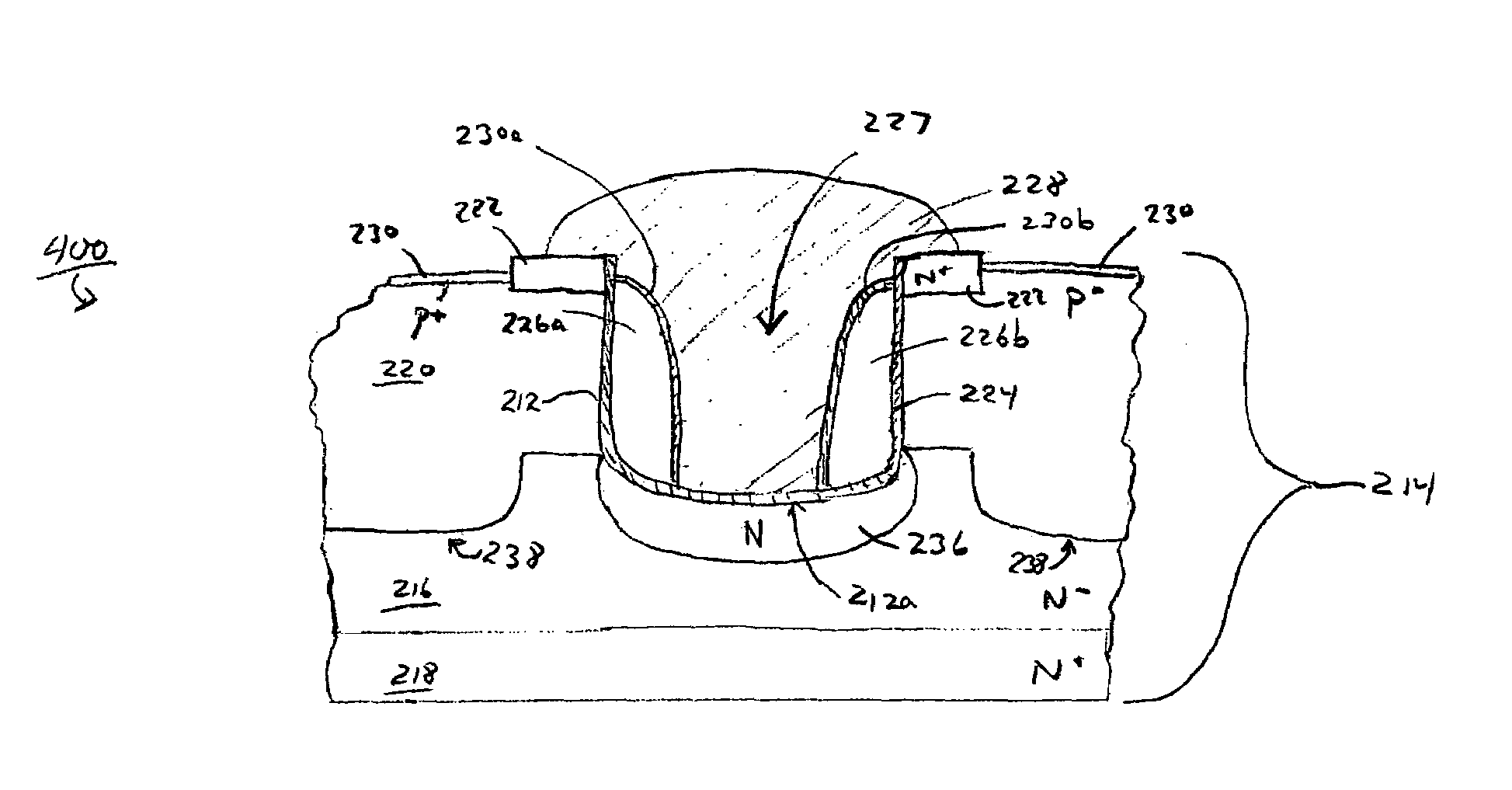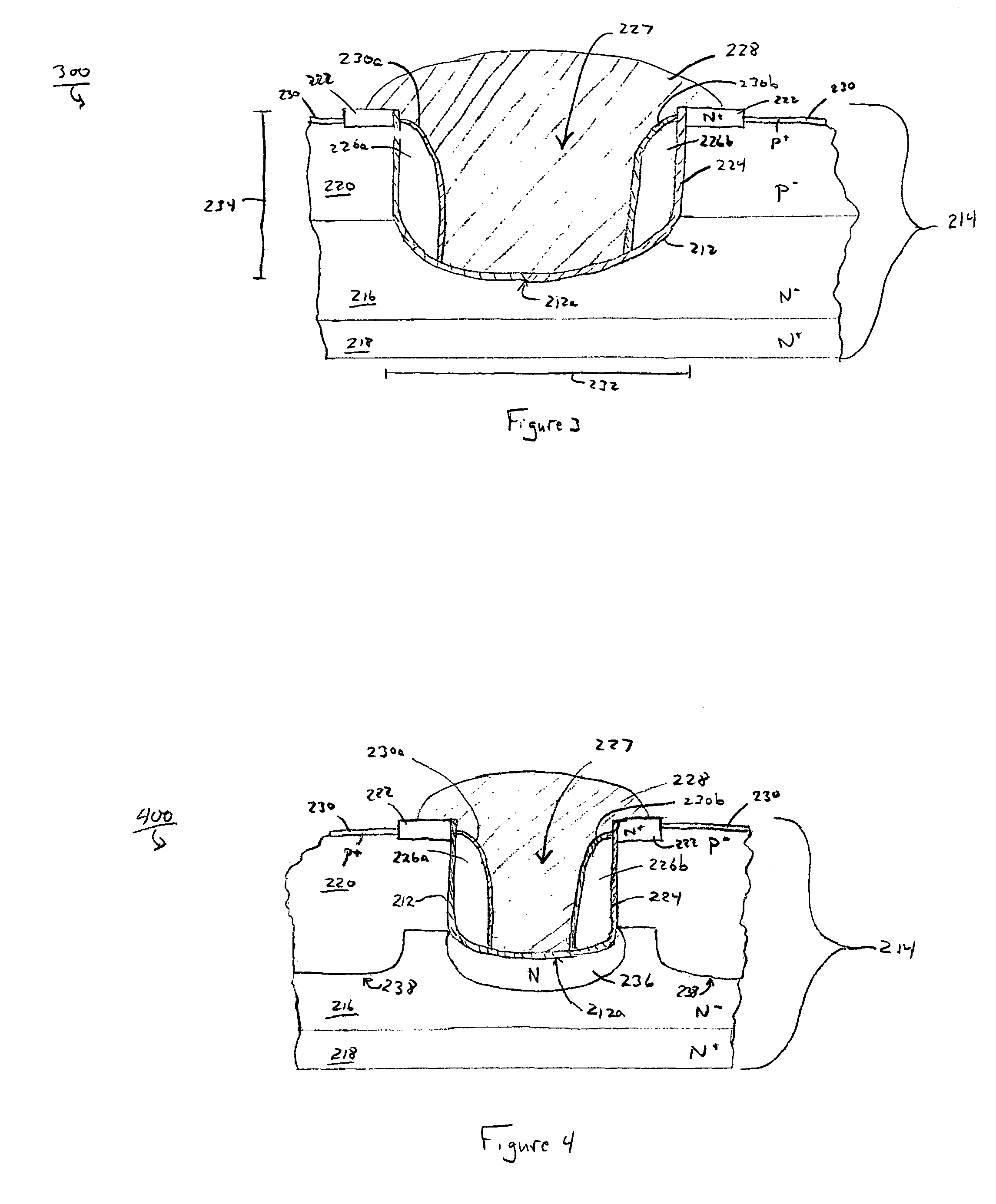Trench MOSFET with sidewall spacer gates
a technology of sidewall spacers and mosfets, which is applied in the direction of semiconductor devices, semiconductor/solid-state device details, electrical apparatus, etc., can solve the problems of difficult to reduce this overlap/gate-drain charge, trench defects, and often complicated process sequences for gate insulation layers with varying thicknesses. , to achieve the effect of reducing the gate charge (qgd), reducing the size, and reducing the gate charge (qg) of the electrod
- Summary
- Abstract
- Description
- Claims
- Application Information
AI Technical Summary
Benefits of technology
Problems solved by technology
Method used
Image
Examples
Embodiment Construction
[0026]Referring to FIG. 2 there is shown a cross-sectional side view of a portion of an active region of a power semiconductor device 200, such as a MOSFET, according to an embodiment of the invention. Device 200 includes a semiconductor body 214 that may be made of silicon or silicon carbide, for example. The exact configuration of body 214 is not specific to the invention. As an example, body 214 may include a drain epi region 216 of one conductivity (e.g. N-type) formed over a silicon substrate 218 of the same conductivity, but of higher concentration of impurities. A channel / body region 220 may be formed in drain epi region 216 that extends from the top surface of the semiconductor body to a first depth. Channel region 220 has a conductivity opposite to that of drain epi region 216 (e.g. P-type). Formed within channel region 220 are source regions 222, which have the same conductivity (e.g. N-type) as drain epi region 216. Device 200 may further include high conductivity contact...
PUM
 Login to View More
Login to View More Abstract
Description
Claims
Application Information
 Login to View More
Login to View More - R&D
- Intellectual Property
- Life Sciences
- Materials
- Tech Scout
- Unparalleled Data Quality
- Higher Quality Content
- 60% Fewer Hallucinations
Browse by: Latest US Patents, China's latest patents, Technical Efficacy Thesaurus, Application Domain, Technology Topic, Popular Technical Reports.
© 2025 PatSnap. All rights reserved.Legal|Privacy policy|Modern Slavery Act Transparency Statement|Sitemap|About US| Contact US: help@patsnap.com



